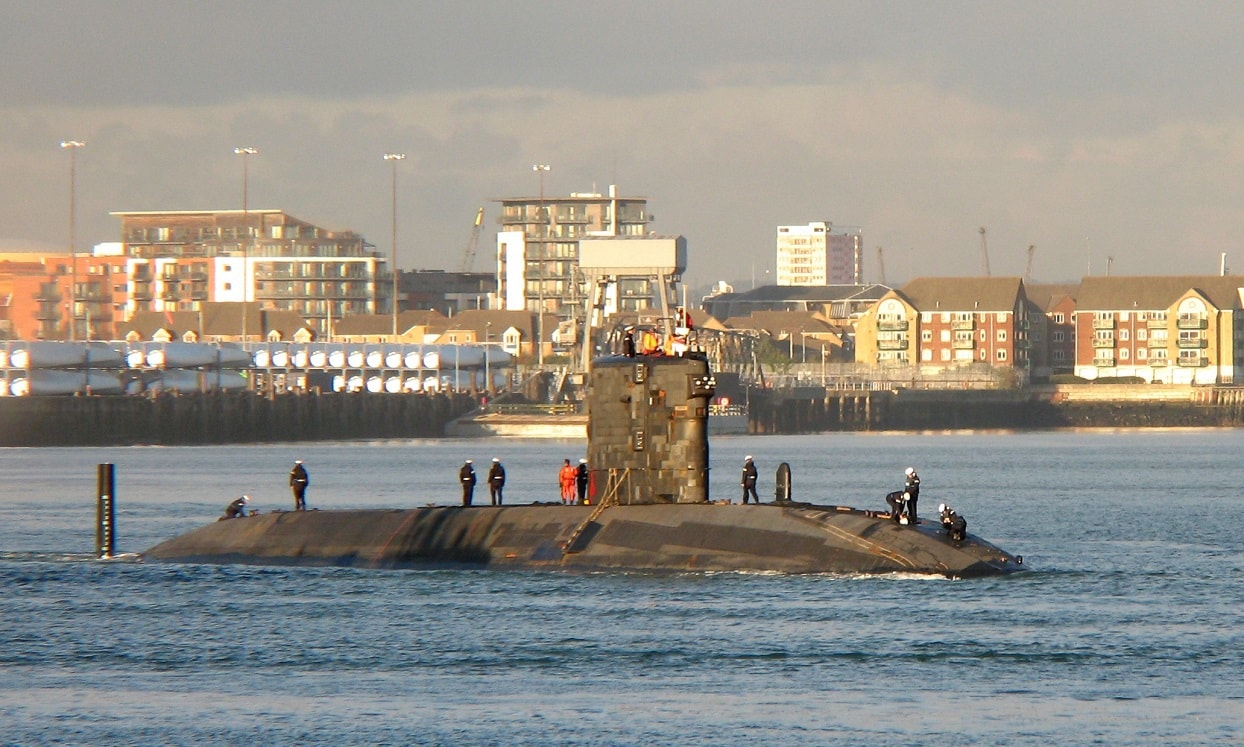Made for anti-submarine and anti-ship warfare, the Trafalgar-class attack submarine still patrols the sea looking for Russian submarines. The British subs are hunter-killers but can also bombard the shores with cruise missiles. Just two remain in service after being commissioned at the end of the Cold War during Operation Desert Storm. The subs have led an active lifespan and served their country well over the last three decades.
The British Are Keeping the Trafalgar-class for Now
The nuclear-powered HMS Talent and HMS Triumph were both slated for retirement in 2022, but the Royal Navy has decided to extend their life another 18-months. They will eventually be replaced by the Astute-class, which the British are excited about due to the new subs’ large size and weapons power. T
The Trafalgar-class could be sold to Australia after their decommissioning. The Australians are concerned about the Chinese bullying countries in East Asia – particularly Taiwan – so having nuclear submarines could change the naval balance between China and Australia.
Meant to Hunt and Kill Boomers
The Trafalgar-class was designed to hunt enemy nuclear-equipped “boomer” ballistic missiles submarines. The Type 2020 sonar onboard the HMS Talent and HMS Triumph is top-notch and it can detect other subs 50 miles away. With a crew of 130, the Trafalgar-class still reduces noise. The subs have a quiet pumpjet propulsion system rather than a propeller. The boats are covered with special tiles that keep them silent and deadly.
HMS Talent and HMS Triumph have improved communications systems with advanced antennas. The periscope has thermal imaging capabilities. Five 533mm torpedo tubes can fire modern, heavy-weight Spearfish torpedoes. Interestingly, the subs can also use torpedo decoys to throw the enemy off.
Land Attack Cruise Missiles Too
These Trafalgar subs are also armed with Tomahawk IV cruise missiles that were launched against targets in Afghanistan, Iraq, and Libya over 1,000 miles away. The firing solution can be updated in-air and the Tomahawk IV can be given a new target while it loiters. The Trafalgar-class can carry up to 30 torpedoes and missiles.
The Australians Need the Trafalgar-class
Should the Trafalgar-class be retired completely or sold to the Australians?
Australia is going to get an assist from the British and Americans on an indigenous new nuclear-powered attack submarine, but that won’t be ready until 2030 or later. The Aussies need help with undersea warfare now. But so do the British. Four Astute-class boats are in service with three more planned by 2026. The Trafalgar-class would need to be refueled and refitted before it could be handed over to Australia. It is not clear who would pay for this work. And the Trafalgar-class would still have to be maintained in Britain. This scenario appears unlikely as the British most-likely do not have a strong industrial base for maintaining older boats for the Australians.
The Russians Are Adept at Undersea Warfare
The Russians get a vote in undersea warfare and the new Borei-class nuclear-powered boomer is a concern for the British. Plus, the Russians are working on the Yasen-M fast-attack boat which compares favorably with the American Virginia-class subs. The Russians are focusing more on undersea warfare, which would mean more patrols in the British area of operations. This is why the Royal Navy is keeping the Trafalgar-class around for the next 18-months and they may want to think about operating them for a longer period. Australia may just need to look elsewhere at this point.
1945’s new Defense and National Security Editor, Brent M. Eastwood, PhD, is the author of Humans, Machines, and Data: Future Trends in Warfare. He is an Emerging Threats expert and former U.S. Army Infantry officer.

